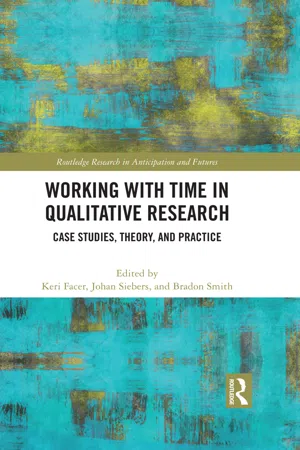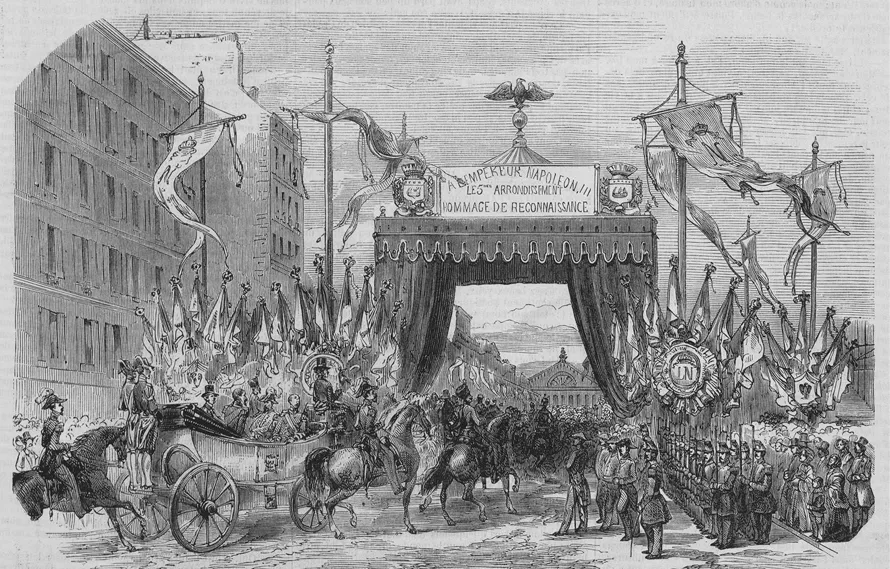Their foreignness is a condition that both the past and the future share. What we preserve from our shared pasts is a question that each generation faces; with future generations, in turn, incorporating past responses to these – or, indeed, the lack thereof – into their lives in ways we can neither predict nor anticipate. This is a process riddled with quibbles, disagreements, moral, and ethical questions which are difficult to address, let alone resolve, as well as practical considerations of what to preserve, why, and for whom (Lowenthal, 2015).
Emphasising the past to the detriment of ignoring the future in the process of writing history poses important limits to the ways in which time is made present in the lives that historians seek to reconstruct. It also inserts an artificial separation: past events on one end; our visions and dreams of the future on another. In this chapter, I wish to explore the relationship between the past and the future in the specific context of one city, Paris, at a particular time in its history, the second half of the nineteenth century. More specifically, the chapter revisits the well-known history of the Paris boulevard to ask the question of what seeing the boulevard through a past futures lens reveals. With such a lens in hand, I argue for a history that pays attention to the routes not taken, the multiple alternatives of change in the past, the futures that never were. A history that provides genealogies of what features of a built environment, such as the boulevard, have denoted and meant in the longue-durée and explains why taking the long view is important. Finally, a history that highlights the various ways in which the boulevard has been used to produce specific readings of Paris, in particular, and of cities, more generally. A past futures approach can help us better to integrate a contextual, robust understanding of the urban past with the forecasts, predictions, and anticipations related to our urban futures. Its use is not limited to historiography as the relationship between the past and the future – which is not to ignore the positioning of the present – is one shaping how time is made present not only in academic writing, across disciplines, but also in the very unfolding of our everyday lives. To conclude, and briefly expanding on the work of Michel Serres, I outline in what ways the notion of past futures contributes to a polychronic history, namely, the kind of history that takes into account multiple times and within them multiple relationships between the past, the present, and the future.
Seeing Paris through a past futures lens
Paris has a long history of the visible hand of kings, emperors, and presidents, in the form of monuments, palaces, gardens, improvements, a number of them vanity projects which have, for better and worse, changed the capital’s face over time (Lavedan, 1975). The scale of the transformation of the city initiated during the Second Empire (1852–1870) and largely continued by the Third Republic (1870–1940) had no precedent then nor since. It was and remains a contingent transformation. One of the main instruments of the change Parisians experienced during this period was the boulevard, namely, the handsome, wide tree-lined avenue which brought air, sun, and health into the insalubrious districts of the French capital. The boulevard also turned Paris into the playground of the middle and upper classes, displacing circa 350,000 people, around 33 per cent of the population recorded as living in Paris in 1851. The displaced consisted largely of the poor.
Introducing a past futures lens into the extensive historiography of nineteenth-century Paris is a significant challenge on its own.1 For the purposes of this chapter, I wish to focus on and draw inspiration from the work of Florence Bourillon, David Harvey, and Pierre Pinon, all three concerned with the Paris of the Second Empire in their own ways. Each, in turn, studying different aspects of the modernisation of the city: the regulatory dimensions of a new form of urbanism which would go on to be imitated in other cities in France, Europe, and beyond; the realisation of a vision that married the accumulation of capital to the transformation of urban space; and the close reading of successive interventions, boulevard by boulevard, to consider their context and their legacy for the Paris we see today.
Bourillon (1992, 2001) has stressed the importance of understanding the different aspects that made Second-Empire urbanism regulatory – read controlling – emerging as it did through the planning of three different consecutive networks of new roads and extensions, which, incidentally, concentrated on central Paris rather than in the periphery and the banlieue. The twin forces of embellishment and improvement that were central to Napoléon III and his Prefect Georges-Eugène Haussmann’s vision of modern Paris constituted what Bourillon (1992) calls an urbanism of regulation, devoted to ensuring the circulation of people, goods, capital, and military forces. This is, Bourillon says, the ‘most visible’ and the ‘most imitated’ characteristic of Haussmann’s plans, and one that was to serve as a model of city and town planning worldwide, however ‘precarious’ or incomplete (Soppelsa, 2016).
To Harvey (2003, 83), the transformation of Second-Empire Paris is one of a third modernity in which a ‘mixed authoritarianism [combined] with an uneasy respect for private property and the market punctuated with periodic attempts to cultivate its populist base’. The unique social and political context within which the opening and extension of new wider streets was conceptualised and performed is something that Harvey reads against the experience of that change as captured in, for example, literature like that of Balzac, Flaubert, and Baudelaire. Understanding the driving forces and main effects of the transformation that Paris experienced between circa 1850 and 1900 is for Harvey a means of resisting the commodification of urban spaces central to the neoliberal agenda advocated by governments in the UK and the USA since the early 1980s.
More recently, Pierre Pinon (2016), has read the Haussmannisation of Paris as one of middle-class goals made real, and we may add so far permanent, through authoritarian means, those of Napoléon III, the Emperor, in particular. Through Pinon’s work we get to see the minutiae tracing the development of each boulevard, from their inception through to their construction, development, and current form. Less a celebration than a considered assessment of the multiple ways in which Paris changed Pinon’s work builds on the important tradition of the city Atlas and the systematic framework of description that it entails.
Arguably, there is a reading of the boulevard that Bourillon, Harvey, and Pinon share, namely, the boulevard as a means of transforming Paris in ways that had little or no precedent and with consequences that are still with us today. My goal is to take that reading further and interrogate the relationship between the past and the future implicit in the making and unmaking of Paris through the boulevard. I do so by discussing the significance of the etymology of the very word boulevard; and by contrasting the boulevard with alternative competing visions and readings of the city, contemporaneous to those by Napoléon III and Haussmann.
A past futures approach, I contend, enables us to raise the question of the future when providing our reconstructions of the past as has been gradually embraced by archaeologies of the contemporary and historians who concern themselves with the future (for example Olsen, 2013; Reilly, 2019; Staley, 2017; Engerman, 2012). It prompts us to recognise the alternative futures of the urban past, in other words, visions, ideas, readings of the city that main narratives of urban change, including those replicated by historiography, tend to obscure and overlook. Secondly, it invites us to reflect on what it means for the relationship between the past and the future to be plural and, moreover, qualify the kind of history that does justice to it: a history of multiple temporalities, what Serres has called polychronic history.
To some extent this is an approach highlighting possibilities in a way akin to ‘history in the subjunctive’ mode: ‘History is a process of accumulating possibilities. Each era’, Epstein (2012, 54) continues, ‘absorbs the unrealized possibilities of the previous era’. While the emphasis on possibilities that Epstein advocates is a good place to start, I am less convinced about the artificial contrast between what is realised (or, what really happened) and what remains latent (López Galviz, Dunn, and Nordin, 2017) which appears to be limited to the ‘what if’ of counterfactuals or the accumulation into the vast inexhaustible repository of human experience. The archive of the debate mostly but not only by historians around these issues is both varied and extensive (see, for example, Guldi and Armitage, 2014).
More fitting to the argument developed in this chapter is the way Epstein (2012, 50) describes the interplay of objects, distance, and events both past and future:
The spatial qualities that we can recognise here are important for the kind of history that a past futures approach advocates. Three-dimensions also relate to time and temporality, for example, in what Penelope Corfield (2010, 395) calls ‘a longitudinally three-dimensional history’, namely, a history studying and drawing connections across: the ‘macro-changes’ of breaks, turning points and revolutions; the ‘long-term micro-changes, which may take long centuries to unfold, spilling out beyond neat stages’; and continuity, which reminds us of the significant stability of everyday life and cycles, institutions, and practices ‘domesticat[ing] change and work[ing] to contain the shock of the new’.
Whether the boulevard introduced a turning point in Paris’ history and what kind of continuity is contained in the vast transformation that took place in the city during the second half of the nineteenth century are the main questions guiding the reflection I pose in this chapter.

